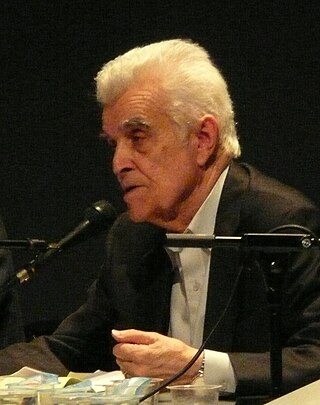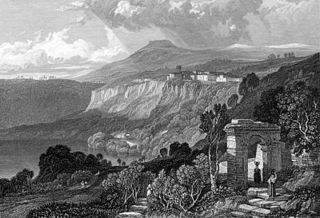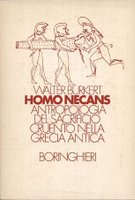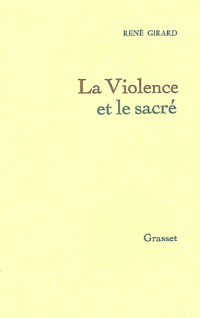
Joseph John Campbell was an American writer. He was a professor of literature at Sarah Lawrence College who worked in comparative mythology and comparative religion. His work covers many aspects of the human experience. Campbell's best-known work is his book The Hero with a Thousand Faces (1949), in which he discusses his theory of the journey of the archetypal hero shared by world mythologies, termed the monomyth.

Samhain, Sauin or Oíche Shamhna is a Gaelic festival on 1 November marking the end of the harvest season and beginning of winter or "darker half" of the year. It is also the Irish language name for November. Celebrations begin on the evening of 31 October, since the Celtic day began and ended at sunset. This is about halfway between the autumnal equinox and winter solstice. It is one of the four Gaelic seasonal festivals along with Imbolc, Bealtaine, and Lughnasa. Historically it was widely observed throughout Ireland, Scotland, and the Isle of Man. A similar festival is held by the Brittonic Celtic people, called Calan Gaeaf in Wales.

The White Goddess: a Historical Grammar of Poetic Myth is a book-length essay on the nature of poetic myth-making by the English writer Robert Graves. First published in 1948, the book is based on earlier articles published in Wales magazine; corrected, revised and enlarged editions appeared in 1948, 1952 and 1961. The White Goddess represents an approach to the study of mythology from a decidedly creative and idiosyncratic perspective. Graves proposes the existence of a European deity, the "White Goddess of Birth, Love and Death", much similar to the Mother Goddess, inspired and represented by the phases of the Moon, who lies behind the faces of the diverse goddesses of various European and pagan mythologies.

A dying-and-rising god, life–death–rebirth deity, or resurrection deity is a religious motif in which a god or goddess dies and is resurrected. Examples of gods who die and later return to life are most often cited from the religions of the ancient Near East. The traditions influenced by them include the Greco-Roman mythology. The concept of a dying-and-rising god was first proposed in comparative mythology by James Frazer's seminal The Golden Bough (1890). Frazer associated the motif with fertility rites surrounding the yearly cycle of vegetation. Frazer cited the examples of Osiris, Tammuz, Adonis and Attis, Zagreus, Dionysus, and Jesus.
Anthropology of religion is the study of religion in relation to other social institutions, and the comparison of religious beliefs and practices across cultures. The anthropology of religion, as a field, overlaps with but is distinct from the field of Religious Studies. The history of anthropology of religion is a history of striving to understand how other people view and navigate the world. This history involves deciding what religion is, what it does, and how it functions. Today, one of the main concerns of anthropologists of religion is defining religion, which is a theoretical undertaking in and of itself. Scholars such as Edward Tylor, Emile Durkheim, E.E. Evans Pritchard, Mary Douglas, Victor Turner, Clifford Geertz, and Talal Asad have all grappled with defining and characterizing religion anthropologically.
In many historical societies, the position of kingship carried a sacral meaning and was identical with that of a high priest and judge. Divine kingship is related to the concept of theocracy, although a sacred king need not necessarily rule through his religious authority; rather, the temporal position itself has a religious significance behind it. The monarch may be divine, become divine, or represent divinity to a greater or lesser extent.

Sir James George Frazer was a Scottish social anthropologist and folklorist influential in the early stages of the modern studies of mythology and comparative religion.

Jonathan Zittell Smith, also known as J. Z. Smith, was an American historian of religions. He was based at the University of Chicago for most of his career. His research included work on such diverse topics as Christian origins, the theory of ritual, Hellenistic religions, Māori cults in the 19th century, and the mass suicide in Jonestown, Guyana, as well as methodological studies on such common scholarly tools as description, comparison, and interpretation. An essayist, his works include Map Is Not Territory, Imagining Religion: From Babylon to Jonestown,To Take Place: Toward Theory in Ritual,Drudgery Divine: On the Comparison of Early Christianities and the Religions of Late Antiquity,Relating Religion: Essays in the Study of Religion, and a collection of his writings on pedagogy, On Teaching Religion.

René Noël Théophile Girard was a French historian, literary critic, and philosopher of social science whose work belongs to the tradition of philosophical anthropology. Girard was the author of nearly thirty books, with his writings spanning many academic domains. Although the reception of his work is different in each of these areas, there is a growing body of secondary literature on his work and his influence on disciplines such as literary criticism, critical theory, anthropology, theology, mythology, sociology, economics, cultural studies, and philosophy.

The rex Nemorensis was a priest of the goddess Diana at Aricia in Italy, by the shores of Lake Nemi, where she was known as Diana Nemorensis.

Theodor Herzl Gaster was a British-born American Biblical scholar known for work on comparative religion, mythology and the history of religion. He is noted for his books, Thespis: Ritual, Myth, and Drama in the Ancient Near East (1950), The Dead Sea Scriptures, about the Dead Sea Scrolls, as well as his one-volume abridgement of Sir James Frazer's massive 13-volume work The Golden Bough, to which Gaster contributed updates, corrections and extensive annotations.
A pharmakós in Ancient Greek religion was the ritualistic sacrifice or exile of a human scapegoat or victim.

Totem and Taboo: Resemblances Between the Mental Lives of Savages and Neurotics, or Totem and Taboo: Some Points of Agreement between the Mental Lives of Savages and Neurotics, is a 1913 book by Sigmund Freud, the founder of psychoanalysis, in which the author applies his work to the fields of archaeology, anthropology, and the study of religion. It is a collection of four essays inspired by the work of Wilhelm Wundt and Carl Jung and first published in the journal Imago (1912–13): "The Horror of Incest", "Taboo and Emotional Ambivalence", "Animism, Magic and the Omnipotence of Thoughts", and "The Return of Totemism in Childhood".

Homo Necans: The Anthropology of Ancient Greek Sacrificial Ritual and Myth is a 1972 book on ancient Greek religion and mythology by the classicist Walter Burkert. It won the Weaver Award for Scholarly Literature, awarded by the Ingersoll Foundation, in 1992.
Myth and ritual are two central components of religious practice. Although myth and ritual are commonly united as parts of religion, the exact relationship between them has been a matter of controversy among scholars. One of the approaches to this problem is "the myth and ritual, or myth-ritualist, theory," held notably by the so-called Cambridge Ritualists, which holds that "myth does not stand by itself but is tied to ritual." This theory is still disputed; many scholars now believe that myth and ritual share common paradigms, but not that one developed from the other.

Violence and the Sacred is a 1972 book about the sacred by the French critic René Girard, in which the author explores the ritual role of sacrifice. The book received both positive reviews, which praised Girard's theory of the sacred, and more mixed assessments. Some commentators have seen the book as a work that expresses or points toward a Christian religious perspective. However, the book has also been seen as "atheistic" or "hostile to religion". Violence and the Sacred became highly influential, in anthropology, literary criticism, and even Christology. It has been compared to the classicist Walter Burkert's Homo Necans (1972). Girard further developed its ideas in a subsequent book, Things Hidden Since the Foundation of the World (1978).
The Holly King and Oak King are personifications of the winter and summer in various neopagan traditions. The two kings engage in endless "battle" reflecting the seasonal cycles of the year: not only solar light and dark, but also crop renewal and growth. During warm days of Midsummer the Oak King is at the height of his strength; the Holly King regains power at the Autumn equinox, then his strength peaks during Midwinter, at which point the Oak King is reborn, regaining power at the Spring equinox, and perpetuating the succession.
The Witch-Cult in Western Europe is a 1921 anthropological book by Margaret Murray, published at the height of the success of Frazer's Golden Bough. Certain university circles subsequently celebrated Margaret Murray as the expert on western witchcraft, though her theories were widely discredited. Over the period 1929-1968, she wrote the "Witchcraft" article in successive editions of the Encyclopædia Britannica.
Myth is a genre of folklore consisting primarily of narratives that play a fundamental role in a society. For scholars, this is very different from the vernacular usage of the term "myth" that refers to a belief that is not true. Instead, the veracity of a myth is not a defining criterion.
Remarks on Frazer's Golden Bough is a collection of Ludwig Wittgenstein's thoughts on James George Frazer's The Golden Bough: A Study in Magic and Religion. The commentary was initially published in 1967, with an English edition in 1979. Wittgenstein wrote the text in the summer of 1931, which represented his earliest efforts to compose what would eventually become the Philosophical Investigations (1953).













